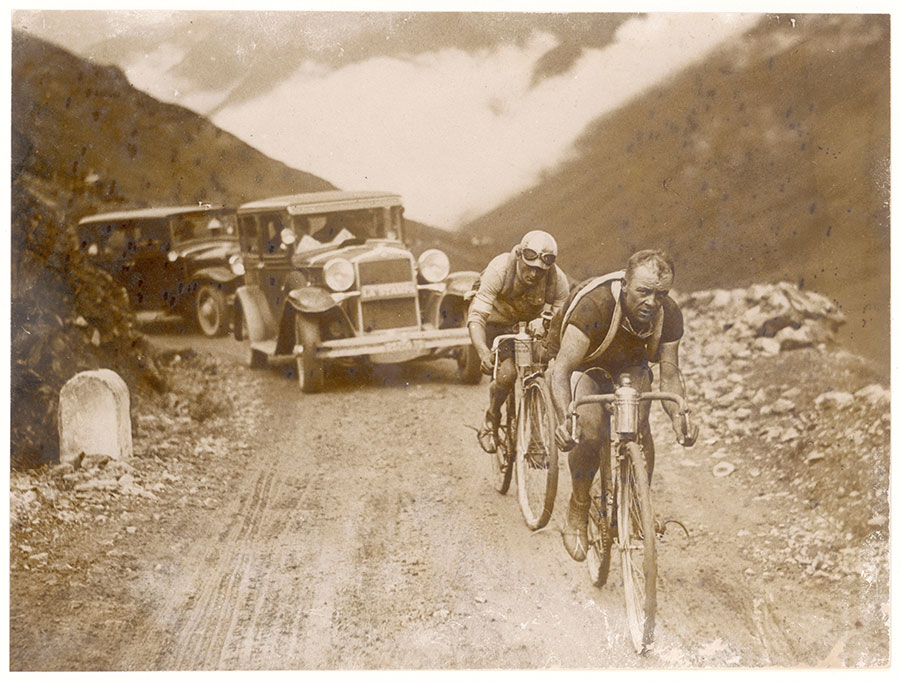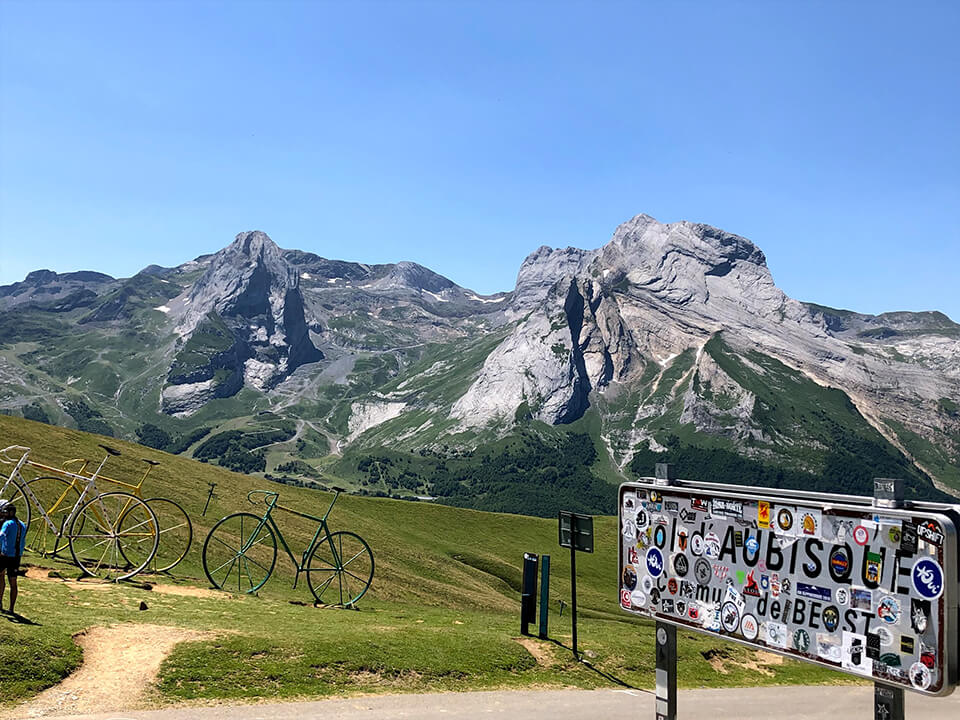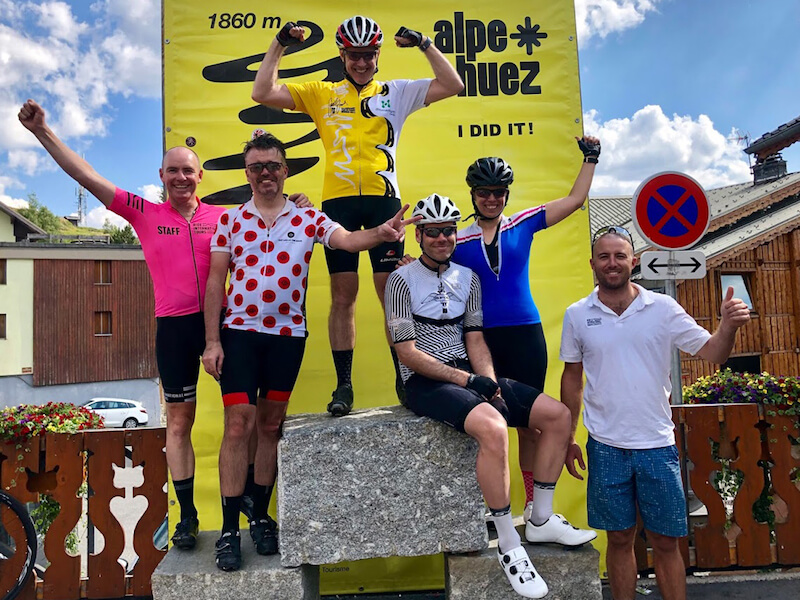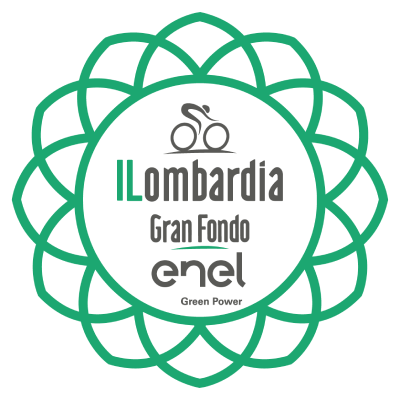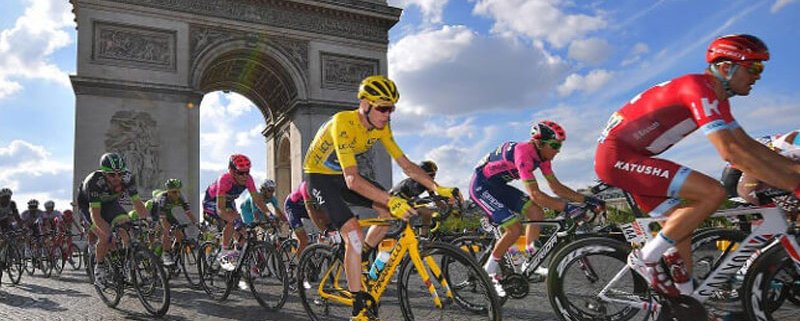
:
The Tour de France is an undeniably remarkable cycling event that encourages riders from all over the globe to stretch their personal physical limits and resilience.
Beginning with the first edition in 1903, the race has been through many changes, such as adding new stages and routes, and has become the massive race we know today.
In this blog, we will explore the history of this thrilling race, including the early years, the golden age where French and Italian cyclists dominated, and the modern era of cycling. It’s an inspiring journey that celebrates human achievement’s incredible power.
Humble Beginnings
The Tour de France was an incredibly audacious venture brought to life by Henri Desgrange, editor of the French sports newspaper L’Auto from 1900-1932.
Inspired by his background in cycling and organising sports events, Desgrange saw great promise in the six-day races in the United States and decided to take a chance to do something even more remarkable – a multi-stage race around France!
So it all started with Desgrange’s race announcement in January 1903. Fast forward half a year, and the first race kicked off with six stages and 2,428 km of terrain to cover in 19 days.
It was a thrilling challenge of stamina, with riders overcoming tough terrain and unpredictable weather conditions. 60 riders embarked on the race, and only 21 completed it.
Maurice Garin, a Frenchman, emerged victorious, winning three stages and finishing over two hours ahead of the runner-up and fellow Frenchman, Hippolyte Aucouturier.
The Early Years
The wild ride begins, full of controversy, discontent, and chaos. Riders resorted to cheating and sabotage in a desperate attempt to gain an edge. At the same time, the race organisers worked fruitlessly to maintain order.
The government suspended the race during World War I and II. Yet, it still managed to experience tremendous growth in popularity.
Race organisers added new stages, new riders emerged as stars, and the race helped establish cycling as a major global sport.
1903
The first official Tour de France race takes place, consisting of six stages covering 2,428 km. Maurice Garin of France wins the race.
1910
Mountain stages are introduced, with riders navigating the Pyrenees and the Alps.
1919
The Tour’s organisers introduced the yellow jersey to allow spectators to identify the race’s leader quickly.
However, it was in mid-July 1919, almost a month into the race, that the jersey was awarded.
Before the yellow jersey was introduced, the race leader would wear a green armband to signal their position.
What does the yellow jersey mean?
Organisers introduced the yellow jersey (Malliot jaune) as a means for spectators to identify the race leader quickly. Organisers introduced the yellow jersey (Malliot jaune) as a means for spectators to identify the race leader quickly.
However, in mid-July 1919, almost a month into the race, they awarded the jersey.
During the Dreyfus affair, a major political scandal in France, the cost of advertising space in a leading sports paper skyrocketed, causing advertisers to become unhappy.
Advertisers withdrew their support in response to the rising cost of advertising and dissatisfaction with the paper’s support of Dreyfus. Instead, they backed the rival publication L’Auto, funded by the same advertisers.
Interestingly, L’Auto used yellow newsprint, leading some to speculate that the iconic yellow colour of the Tour de France’s yellow jersey was to match the distinctive colour in the paper purposely.
The Golden Age
The golden age of the Tour de France was a time of unparalleled greatness. French and Italian cyclists reveled in glory and became the source of national pride.
People were out in droves, cheering their heroes on and relishing their country’s great success.
It was a breathtaking sight – all around, people seemed to have come out of their homes in masses, the air thick with their passionate cheers in honour of the cycling champions, a unified spirit of love and admiration for their nation reigning strong.
Golden moments
1947
Gino Bartali, an Italian cyclist, had a moment of glory when he achieved his second victory.
This monumental achievement was met with extreme joy from the Italian people, especially after the sorrow following the end of World War II. His victory is heroic, and he remains celebrated as a national hero in Italy.
1955
The world held its breath as Frenchman Louison Bobet accomplished unprecedented greatness.
Bobet made history with his remarkable feat of becoming the first rider ever to win three consecutive races, an incredible accomplishment that set him apart and pushed the boundaries of what others believe can be achieved.
1961
The legendary Jacques Anquetil rose to the challenge and achieved the impossible!
His feat of a record-breaking 5th win is a remarkable testament to his skill and unyielding dedication, making him one of the greatest athletes the world has ever seen!
His accomplishment will forever be remembered and celebrated.
The Modern Era
The Tour de France of today looks drastically different from the humble event that began in France many years ago.
Just think, what was once a mere French event is now a global phenomenon, attracting riders from all corners of the world, each showing remarkable finesse and high competition standards.
Unforgettable highlights
1984
The triumphs of French rider Laurent Fignon in 1983 and 1984 were legendary!
Famed for his daring and unorthodox approach to cycling, Fignon utilised aerodynamic equipment and a low riding position for a unique advantage over his competitors.
His feats of cycling prowess remain the stuff of legends.
1998
The cycling world was devastated by the doping scandal, with multiple riders testing positive for performance-enhancing drugs.
This led to urgent action from race organisers, taking necessary steps to prevent further cheating and bringing in stricter testing protocols and punishments for cyclists who violate the rules.
2011
What an incredible moment for Australia when Cadel Evans, who had already tasted defeat twice in 2007 and 2008, finally won in 2011! This victory had a lasting impact on cycling in Australia, inspiring a new generation of riders and cycling enthusiasts.
The legend continues
The Tour de France stands head and shoulders above other sporting events – its real presence on the world stage continues its strength.
It remains the go-to competition for top cyclists worldwide, a gruelling challenge that tests every aspect of their skill and strength.
People come from near and far to witness this awe-inspiring event, and it continues to captivate the hearts and minds of millions across the globe.
New routes and stages
In recent years, organisers have updated the course design to make the race even more exciting and captivating, including the following:
2014
On this historic day, the 109th edition marked its inaugural start in Yorkshire, England, thus beginning a new era for the world-renowned race.
Following the English Channel crossing, the riders continued through France, with a challenging mountain stage in the Vosges and a grand finale on the towering Puy-de-Dôme volcano.
2016
The Tour de France included a particularly difficult stage that ended with a climb up the iconic Mont Ventoux. An unfortunate motorbike incident occurred at Challet Reynard near the summit.
Several riders, including overall race winner Chris Froome, had to run with their bikes to complete the stage.
2018
The twenty-first stage provided a thrilling conclusion as riders faced a challenging ascent of the Col du Portet in the Pyrenees, with steep inclines and decreased oxygen levels at higher altitudes.
2021
The race began in the enchanted region of Brittany and culminated in the City of Love – Paris, as is tradition! Yet, this year the cyclists were presented with new obstacles, including:
- The daunting Mont Ventoux
- The steep ascent up the Col du Portet in the Pyrenees!
2022
With a booming start from Copenhagen, the 2022 tour began its epic 3,328km journey through Belgium, France and the Alps.
After battling six gruelling mountain stages and five altitude finishes, riders faced their final challenges in the Pyrenees mountains before the action-packed final stage on the Champs-Elysées in Paris.
This is a testament to how passionate the organisers are about creating a challenging and beautiful route that celebrates the diverse landscape of France and surrounding countries.
Experience the Ultimate Tour de France Tour
We are absolutely in love with France – the people, its unique art and culture, its incredible food and wine, its long and fascinating history, the beautiful outdoors, the magnificent mountains and its unparalleled enthusiasm for the world’s biggest sporting event.
We are excited to show you the dream Tour de France experience, including our loop rides of:
- Alpe D’huez
- Mont Ventoux, Paris
- Many more breathtaking locations around France.
View our Ultimate Tour de France cycling tour details for more information on an experience you won’t forget!

